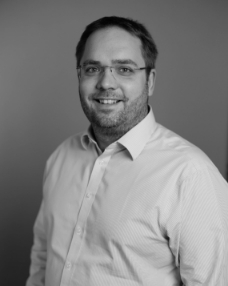Impedance Measurements - Instruments, Sensors & Beyond: An introduction on how to choose, design and successfully use setups for electrical impedance spectroscopy
Dipl. phys. Martin Bulst
Lead application emgineer at Sciospec Scientific Instruments GmbH, Bennewitz, GermanyAccurately performing electrical impedance spectroscopy can be a challenging task. Choosing equipment, sensors and configurations for impedance measurements involves making many choices building on a deep understanding of specifications, parameters, and general options that even for experienced engineers and scientists can be tricky. Complex cross-dependencies of the components, practical limitations and all too often, unprecise not generally applicable assumptions are just a few of the obstacles to navigate. This tutorial discusses the most important aspects of measurement setups for electrical impedance spectroscopy and illustrates those on many real-life reference cases both from academic research and industrial application. Some of the topics covered include
- Brief review of basics of impedance spectroscopy
- A tour of common and some not so common impedance applications
- Measuring impedance – overview of available instrument classes and their individual strengths
- Deep dive into the most important specifications and what they practically mean
- Multichannel options
- Parasitic influences
- Electrodes and sensors
Short biography:
 Martin Bulst studied Physics at the University of Dresden and the University of Leipzig. Still being in university he joined Sciospec in 2010 as a founding member. He obtained a diploma in Physics in 2013 as part of a joint research project with Sciospec, University of Leipzig and the Leibniz Institute of Surface Modification (IOM) in Leipzig. His diploma thesis (2013) dealt with dynamic characterization of organic thin film structures using impedimetric measurement techniques on piezoelectric resonant sensors. Ever since he started working with Sciospec, Martin took a key role in application development. In his position as lead application engineer, he has been part of many product developments both internal and for industrial partners and coordinated several joint research projects.
Martin Bulst studied Physics at the University of Dresden and the University of Leipzig. Still being in university he joined Sciospec in 2010 as a founding member. He obtained a diploma in Physics in 2013 as part of a joint research project with Sciospec, University of Leipzig and the Leibniz Institute of Surface Modification (IOM) in Leipzig. His diploma thesis (2013) dealt with dynamic characterization of organic thin film structures using impedimetric measurement techniques on piezoelectric resonant sensors. Ever since he started working with Sciospec, Martin took a key role in application development. In his position as lead application engineer, he has been part of many product developments both internal and for industrial partners and coordinated several joint research projects.

